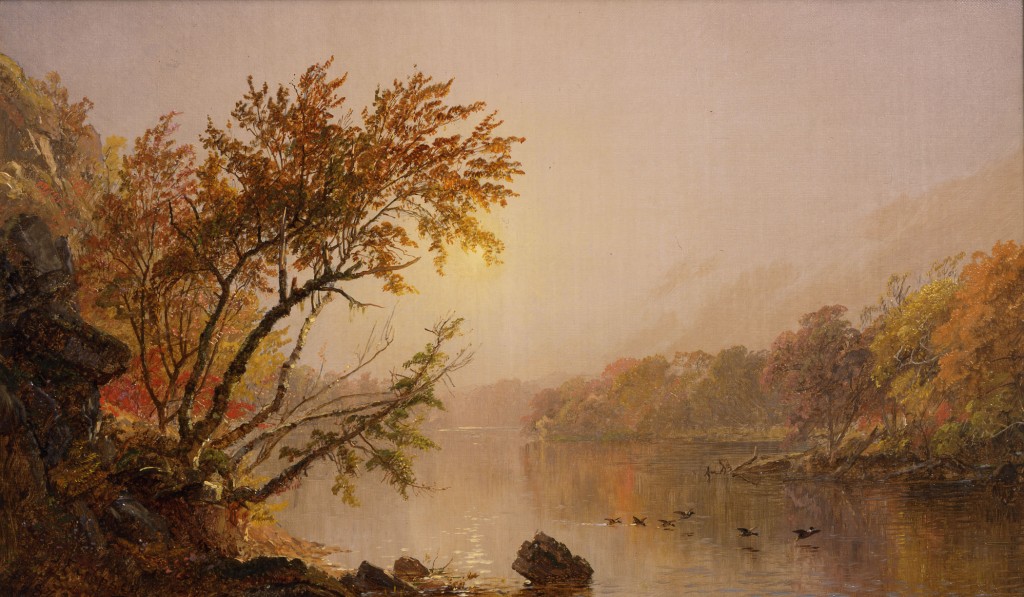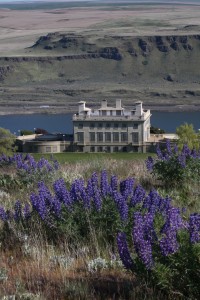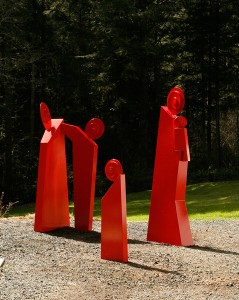When I was growing up near the Canadian border in Whatcom County, Washington, in the 1950s and ’60s the border was a convenient and largely irrelevant smudge. It was there, and everybody knew it, and if you traveled from one country to the other you had to go through Customs, but few people really took it seriously – at least, until the Vietnam War heated up and it became an escape route for draft age young men. It was a rare day when you didn’t run into a Canadian or three on the south side of the border, or a United States citizen or three on the north. People routinely took day trips to one side of the line or the other, simply because it was mildly exotic to cross into another country, no matter how many times you’d done it before. Most everyone’s pockets jingled with both Canadian and U.S. coins, which merchants on either side of the border happily accepted at face value: They’d rather have the business and eat the sometimes dime-on-a-dollar difference in value than not have the business at all. Bellingham, the county’s biggest town, had a television station, KVOS, which locals often jokingly called CVOS because it ran so many Canadian commercials aimed at the bigger population across the line. Canadian shoppers drove down to the border town of Blaine, where the harbor was lined with the fish canneries in which many of my friends’ mothers worked during the summer months, to stock up on salmon or tuna and maybe stop at the duty-free liquor store before heading back home. And just a bit south, along the narrow crescent waterfront drive of the cotton-candy-and-Ferris-wheel getaway of Birch Bay, teen-agers from both sides of the border would cruise on weekend nights and summer days, ogling one another, giving fleshly meaning to the term “foreign affairs.” Babies came out of these flirtations. Sometimes marriages, too.
So when Cedella Roman was accosted by United States Border Patrol officers on May 21 of this year and hauled off to two weeks of imprisonment in the maw of the Immigration and Customs Enforcement machine, I knew exactly where she’d gone wrong. I grew up 15 miles south of it.
Roman, a 19-year-old Frenchwoman visiting her mother in North Delta, British Columbia, was out jogging along the waterfront when she accidentally ran past the border, at a spot where it isn’t marked, and into Washington state. Because she was wearing jogging clothes she wasn’t carrying any identification, and that might be what did her in. Or maybe what did her in was the harsh and unyielding logic of the new United States isolationism, a belligerent intransigence that seems hellbent on making enemies of our closest friends.

The spot where Roman was taken into custody overlooks Semiahmoo Bay, which flows into the Salish Sea and laps against both Blaine, on the U.S. side, and Douglas, in British Columbia, and is within a shout and a whistle of Peace Arch Park. The park is actually two conjoined parks, one operated by the provincial government of B.C. and the other by Washington state, and for children from both sides of the border it was great sport to stand inside the park’s arch, which straddles the invisible border, and plant one foot in Canada and the other in the United States. In the decades of my early memories Peace Arch Park was a picture-book garden of a place celebrating the friendly relations between the two great northern countries in North America. Canadian and U.S. citizens alike would pack a picnic, drive to the park, amble through the rose gardens, maybe play a game of catch or Frisbee, then pick a spot on the grass on either side of the border and chow down.
Times have changed. And the picnic, it seems, is over. Continue reading O Canada! Singing the Peace Arch blues


 Of course, I’d just driven the 110 miles east from Portland to see a bunch of paintings by dead people: the museum’s show Hudson River School Sojourn, which is on view through July 8.
Of course, I’d just driven the 110 miles east from Portland to see a bunch of paintings by dead people: the museum’s show Hudson River School Sojourn, which is on view through July 8. But as crucial as those things are to Maryhill’s identity (a prominent art historian told me the other day that the museum should concentrate on its “creation myth”), they’re not the whole story. Musgrave, a practicing contemporary painter who’s been showing his own work since the late 1960s in California, the Northwest, and even Australia and Japan, has nurtured relationships with contemporary-art collectors such as Portland’s Jordan Schnitzer. He’s worked directly with a lot of artists, and he’s nurtured at least a nascent sense that in this place, time can mingle. “My favorite thing to do is to take contemporary artists and combine them with things in the permanent collection,” he says.
But as crucial as those things are to Maryhill’s identity (a prominent art historian told me the other day that the museum should concentrate on its “creation myth”), they’re not the whole story. Musgrave, a practicing contemporary painter who’s been showing his own work since the late 1960s in California, the Northwest, and even Australia and Japan, has nurtured relationships with contemporary-art collectors such as Portland’s Jordan Schnitzer. He’s worked directly with a lot of artists, and he’s nurtured at least a nascent sense that in this place, time can mingle. “My favorite thing to do is to take contemporary artists and combine them with things in the permanent collection,” he says.